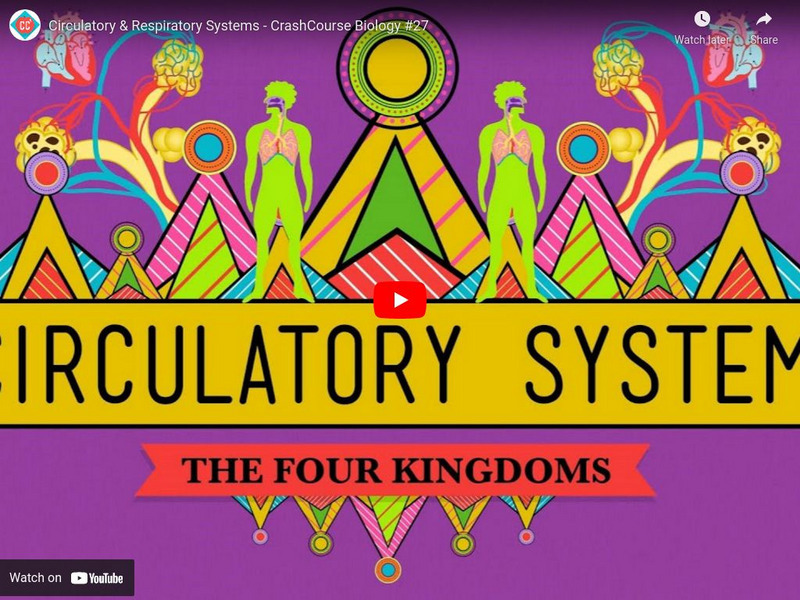Other
Ikonet: Virtual Human Body
Detailed virtual images of the human body broken down from general anatomy into the specific systems. An interactive opportunity allows for 3D views and overlapping sytems to understand how they work together.
PBS
Pbs Kids Clubhouse Adventures: Read Good Books!: Chalk Drawings
In this feature, kids use chalk to trace the outline of their body, then add internal anatomy to their drawings from what they've learned in books they've checked out from their library. [1:34]
Sophia Learning
Sophia: Disorders of the Eye: Lesson 1
This lesson will examine the cause and effect of various disorders of the eye. It is 1 of 4 in the series titled "Disorders of the Eye."
Sophia Learning
Sophia: Fetal Development: Lesson 2
This lesson will identify how a fetus develops during the second and third trimesters of pregnancy. It is 2 of 5 in the series titled "Fetal Development."
NPR: National Public Radio
Npr: A Mystery: Why Can't We Walk Straight?
Learn why you walk in circles when blindfolded! This video explores the need to have a visible guide point to be able to walk in a straight line. [3:34]
Other
Michael Chin: The Human Nervous System: Part 1
Video created by Michael Chin for Mr. Hussey's 12th grade Biology class explains the complexities of the human nervous system with clarity. [9:58]
Crash Course
Crash Course Biology #27: Circulatory & Respiratory Systems
Hank takes us on a trip around the body - we follow the circulatory and respiratory systems as they deliver oxygen and remove carbon dioxide from cells, and help make it possible for our bodies to function. [11:40]
Amoeba Sisters
Amoeba Sisters: The 11 Human Organ Systems
A video that discusses the 11 organ system of the human body. Learn some basic information about the circulatory, digestive, endocrine, excretory, integumentary, lymphatic, muscular, nervous, reproductive, respiratory, and skeleton...
Crash Course
Crash Course Biology #30: The Skeletal System It's Alive!
Hank introduces us to the framework of our bodies, our skeleton, which apart from being the support and protection for all our fleshy parts, is involved in many other vital processes that help our bodies to function properly. [13:11]
Khan Academy
Khan Academy: Tropomyosin and Troponin
Tropomyosin and troponin and their role in regulating muscle contraction. How calcium ion concentration dictates whether a muscle is contracting or not.
Khan Academy
Khan Academy: Human Biology: Hemoglobin
Learn about hemoglobin and its role in the circulatory system.
Khan Academy
Khan Academy: Human Biology: Correction to Sodium and Potassium Pump Video
This video is a correction to sodium and potassium pump video showing that the main cause of the potential difference between the outside and inside of the membrane is due to fact that the membrane is highly permeable to potassium and...
Crash Course
Crash Course:why Do We Have Snot?
This video discusses the reasons that the body produces "snot".
Crash Course
Crash Course History of Science #15: The New Anatomy
What is life? To try to answer that question, three tools stand out as being especially useful: A book, some experiments, and the microscope! In this video, trace the history of different theories about how our body works. [12:15]
Sophia Learning
Sophia: Organ Systems
This presentation highlights the eleven organ systems of the body, giving a brief overview of their functions. [9:24]
Khan Academy
Khan Academy: What Is Allergic Rhinitis?
This Khan Academy resource, created by Jeff Otjen is a video that describes the condition allergic rhinitis.
Khan Academy
Khan Academy: Transmission of Hiv
Visit us (http://www.khanacademy.org/science/healthcare-and-medicine) for health and medicine content or (http://www.khanacademy.org/test-prep/mcat) for MCAT related content. These videos do not provide medical advice and are for...
Khan Academy
Khan Academy: Treating Hiv: Antiretroviral Drugs
Visit us (http://www.khanacademy.org/science/healthcare-and-medicine) for health and medicine content or (http://www.khanacademy.org/test-prep/mcat) for MCAT related content. These videos do not provide medical advice and are for...
Khan Academy
Khan Academy: The Effects of Mutations
The Khan Academy resource is a video about the effects of mutations.
Khan Academy
Khan Academy: Urination
This Khan Academy resource is a video about the process of urination.
Khan Academy
Khan Academy: Types of Hormones
There are three major types of hormones. 1) Protein hormones (or polypeptide hormones) are made of chains of amino acids. An example is ADH (antidiuretic hormone) which decreases blood pressure. 2) Steroid hormones are derived from...
Khan Academy
Khan Academy: What Is Pneumonia?
Pneumonia is a medical condition where lung tissue becomes inflamed, usually caused by a virus or bacteria. Learn how shortness of breath, cough, and fever are common symptoms of this condition and why they occur in pneumonia.
Khan Academy
Khan Academy: The Lungs and Pulmonary System
The pulmonary system including the lungs, larynx, trachea, bronchi, bronchioles, alveoli and thoracic diaphragm.























